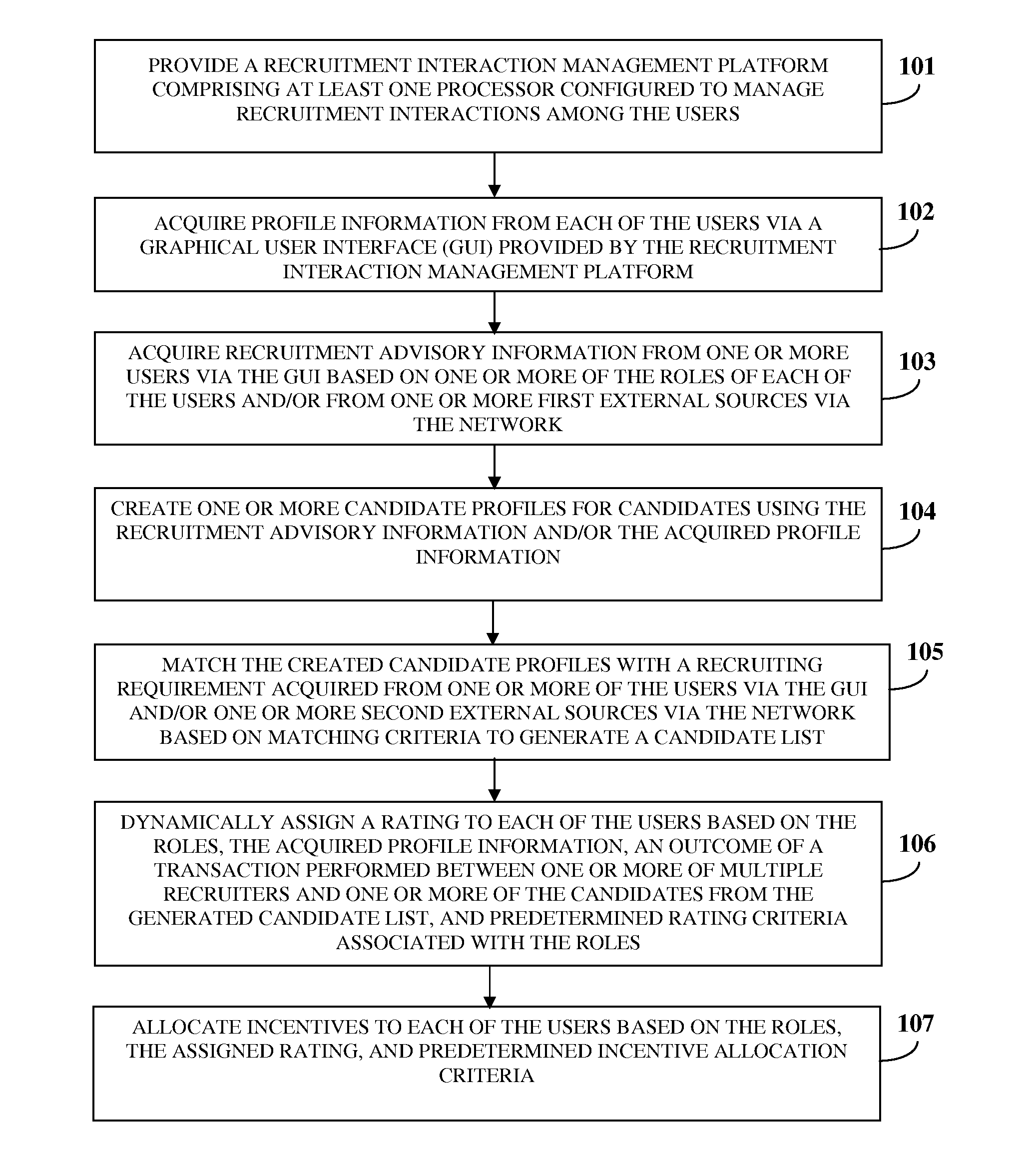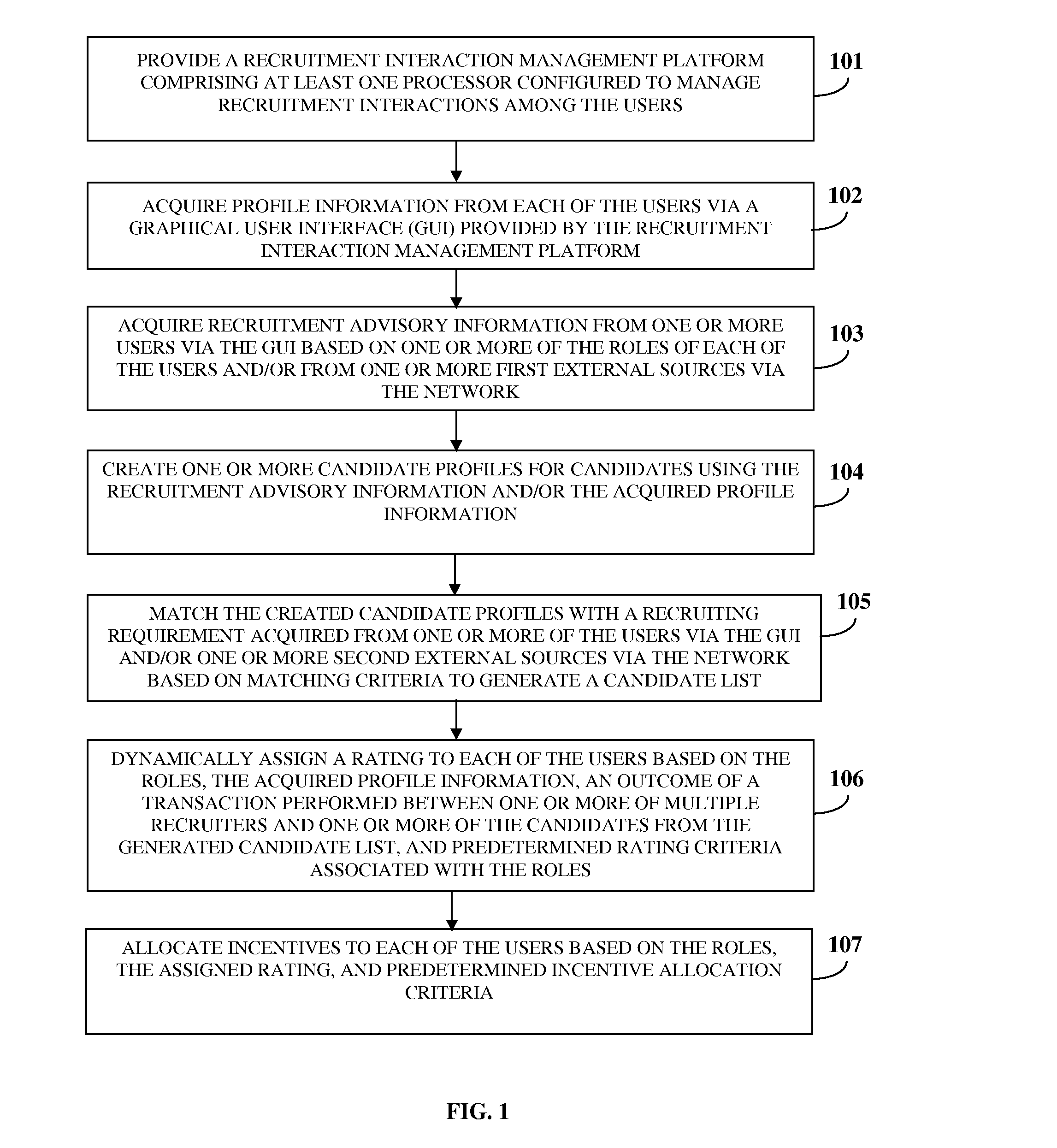Recruitment Interaction Management System
a technology of interaction management and recruitment website, applied in the field of recruitment interaction management system, can solve the problems of inability to provide anonymous recommendations, ineffective passive candidate solicitation, and inability to meet the needs of users,
- Summary
- Abstract
- Description
- Claims
- Application Information
AI Technical Summary
Benefits of technology
Problems solved by technology
Method used
Image
Examples
Embodiment Construction
[0037]FIG. 1 illustrates a computer implemented method for managing recruitment interactions among multiple users associated with multiple roles. The computer implemented method disclosed herein provides 101 a recruitment interaction management platform comprising at least one processor configured to manage the recruitment interactions among the users. As used herein, the term “recruitment interactions” refers to contribution of recruitment advisory information, private communication among multiple users, for example, recruiters or employers, active candidates, passive candidates, recommenders, screeners, etc., during a process leading to the recruitment of the candidates, subsequent feedback communication from the recruiters, and subsequent allocation of incentives to one or more users. The term “recruiter” refers to an employer of an organization or a representative of an employer that is involved in the recruitment of one or more candidates for the employer. The recruiter is, for...
PUM
 Login to View More
Login to View More Abstract
Description
Claims
Application Information
 Login to View More
Login to View More - R&D
- Intellectual Property
- Life Sciences
- Materials
- Tech Scout
- Unparalleled Data Quality
- Higher Quality Content
- 60% Fewer Hallucinations
Browse by: Latest US Patents, China's latest patents, Technical Efficacy Thesaurus, Application Domain, Technology Topic, Popular Technical Reports.
© 2025 PatSnap. All rights reserved.Legal|Privacy policy|Modern Slavery Act Transparency Statement|Sitemap|About US| Contact US: help@patsnap.com



